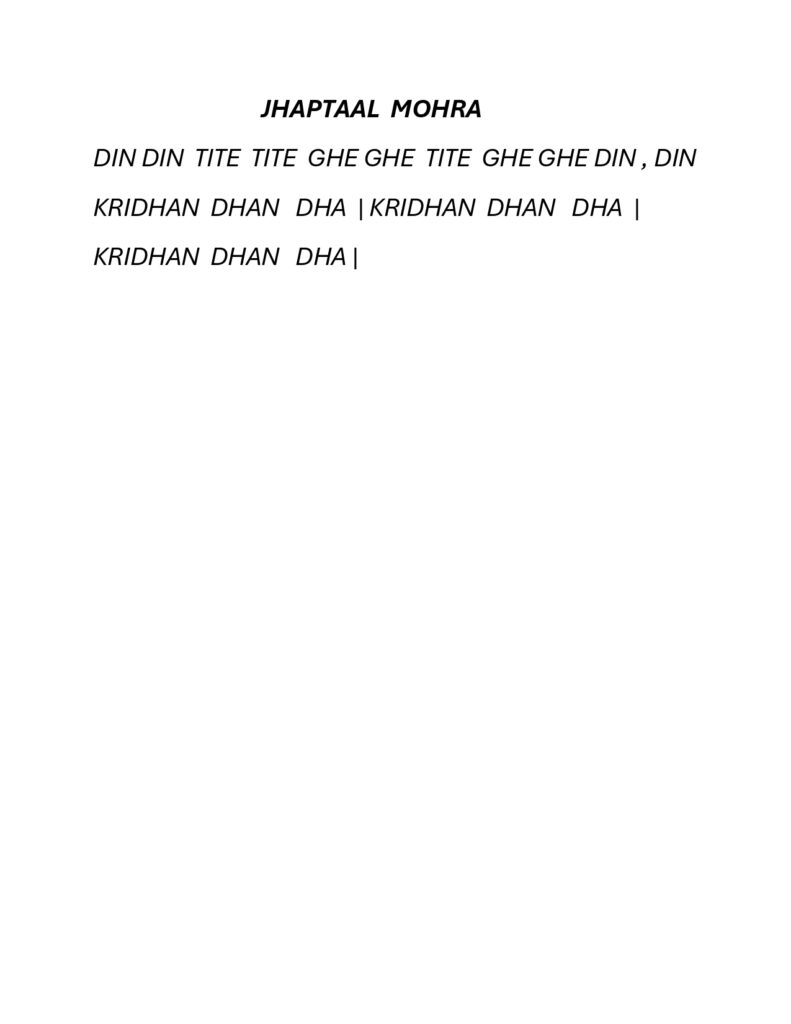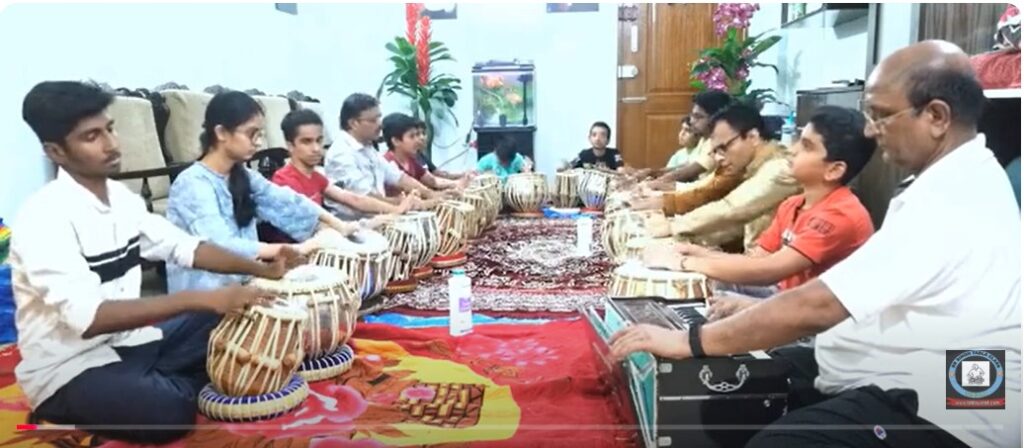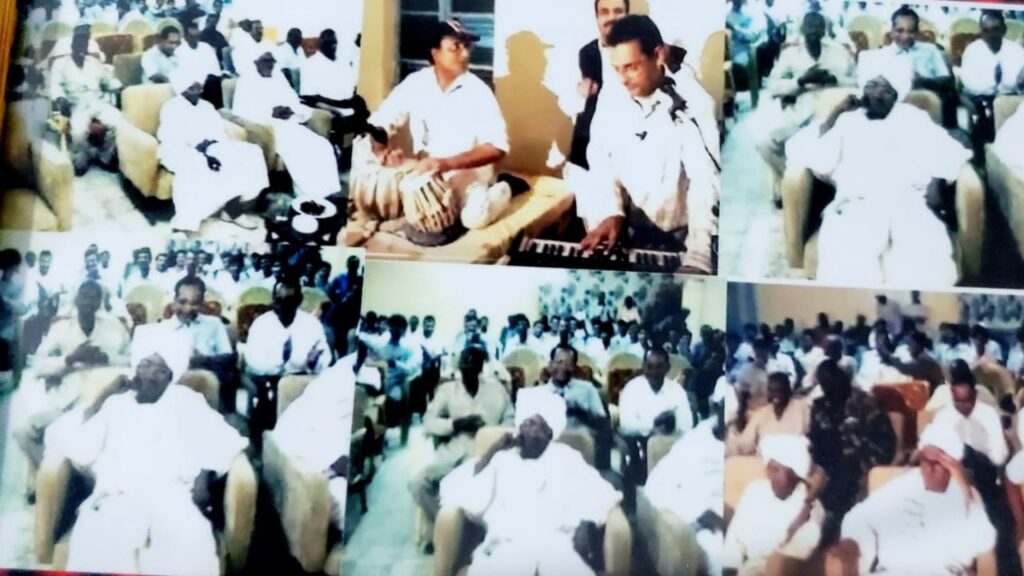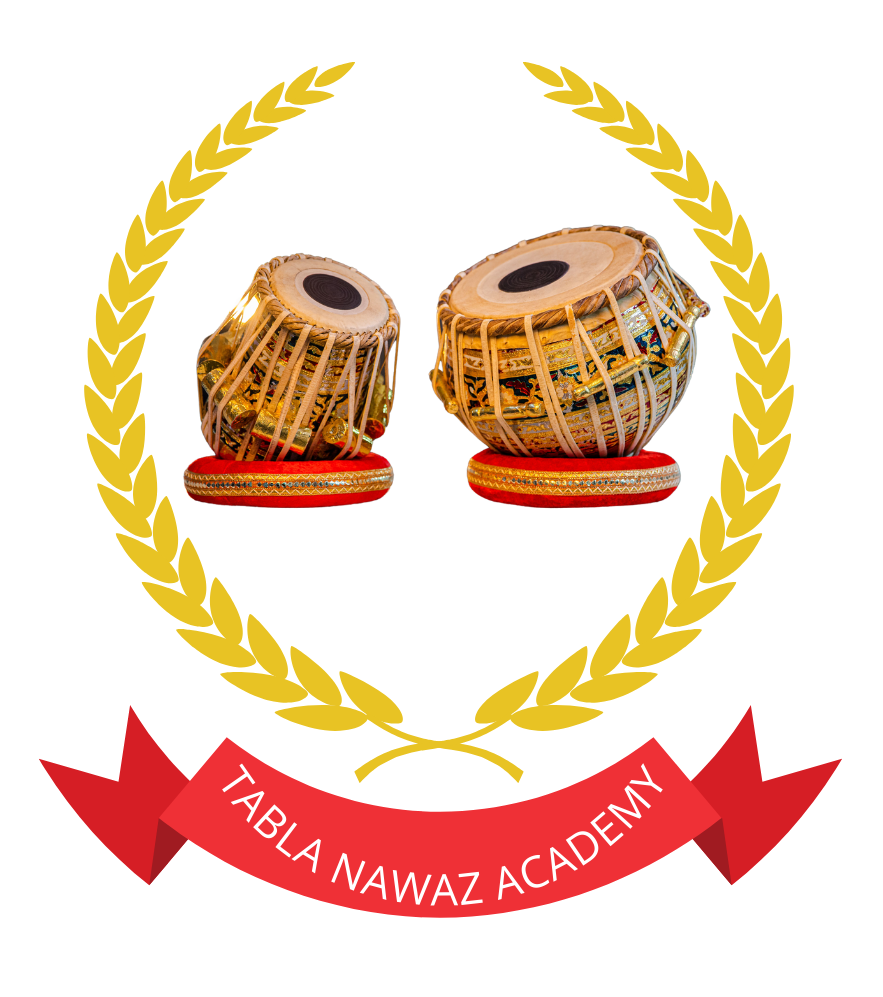Jhap Taal Mohra Echoes of 10: A Mohra in Jhaptaal, The Explosive Art of the Jhaptaal Mohra: A Rhythmic Masterstroke in Tabla In the vast and intricate world of Indian classical music, the tabla holds a central place as both an accompanying and solo instrument. Among its many rhythmic forms, Jhaptaal stands out with its distinctive 10-beat cycle, offering a unique canvas for the tabla artist. Within this taal, the Mohra — a powerful, often climactic composition — emerges as a moment of technical brilliance and expressive intensity. This blog explores the Mohra in Jhaptaal: what it is, how it functions, and why it captivates listeners with its explosive beauty.

Jhaptaal is structured into four divisions (vibhags): 2 + 3 + 2 + 3. This asymmetrical pattern gives it a dynamic flow, different from the balanced rhythm of Teentaal (16 beats). The beats of Jhaptaal are counted as: 1 (clap), 2, 3 (clap), 4, 5, 6 (wave), 7, 8 (clap), 9, 10. This layout challenges the tabla player to maintain groove and complexity simultaneously. It is this unpredictability that makes the Jhaptaal Mohra both difficult and exciting to play. A Mohra is a composed phrase — a flourish of tabla bols (syllables) — that appears in solo performances or as a transition within improvisation. Unlike the tukra or chakradhar, which often follow strict structures, a Mohra is more fluid, expressive, and characteristically used to bridge between major sections or conclude a passage. It may also contain a tihai, a phrase repeated three times to land on the sam, or first beat of the cycle.
In Jhaptaal, a Mohra showcases the artist’s control over space and silence, their grasp over phrasing, and their sense of timing. A typical Jhaptaal Mohra may begin slowly, using open resonant bols like Dha, Dhin, and Ge, before accelerating into a cascade of lighter strokes such as Na, Tin, and Kat. For example, a simple Mohra might go:
Dha Ge Na Dha – Tin Na Kat Tin – Dha Ge Ne Dha – Dha Tirkit Dha Ge Na – Dha Tirkit Dha Ge Na – Dha Tirkit Dha Ge Na
This final phrase is a tihai — a triple repetition that lands exactly on beat 1, closing the cycle with dramatic precision. The skill here is not just in the bols used, but in the calculation. The tabla player must count backward from the sam, adjust the phrase length, and execute it with speed and clarity. The audience, whether deeply trained or new to classical rhythm, instinctively feels the landing. It’s like watching a gymnast stick a perfect landing — complex, athletic, and satisfying.
Historically, the Mohra has been a space for artistic expression and individuality. Tabla maestros from various gharanas have developed unique styles of playing Jhaptaal Mohra. The Delhi gharana might focus on clarity and symmetry, while the Punjab gharana introduces robust bols and powerful delivery. Ustad Alla Rakha and his son Ustad Zakir Hussain have performed unforgettable Jhaptaal Mohras in solo concerts, often using them to build up to a thunderous climax that brings the audience to applause.
Beyond classical concerts, the Jhaptaal Mohra has found its way into contemporary music. Fusion artists like Karsh Kale and electronic producers have sampled tabla phrases, sometimes inserting Mohra-like cadences into drum loops and cinematic scores. Bollywood songs occasionally feature tabla interludes built on Jhaptaal or similar taals, giving a nod to classical structure while keeping the energy modern and accessible.
To experience a Jhaptaal Mohra is to witness the tabla in one of its most expressive forms. It is where math meets magic — where the artist plays not just with sound, but with time itself. For tabla learners, mastering the Jhaptaal Mohra is a milestone, a sign of rhythmic maturity and confidence. For listeners, it’s an auditory thrill — a whirlwind of beats that resolves with pinpoint accuracy. Whether in a concert hall or a digital track, the Jhaptaal Mohra continues to demonstrate the tabla’s unmatched ability to blend tradition, innovation, and sheer power.


https://www.youtube.com/@BhagawanSingh
